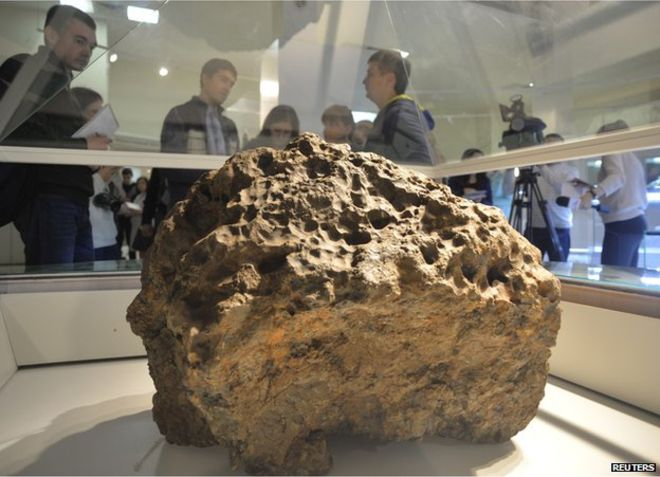The 2024 Olympics are starting on Friday the 24th of August. For everything you didn’t know about Olympic medals read on..
The 2024 Paris Olympics are just days away! But before the games begin, let’s dive into the fascinating world of Olympic medals. Ever wondered what they’re made of? Or how their designs tell the story of each host nation?
Join us on a journey through time, uncovering surprising facts, iconic moments, and the cultural and economic impact of these coveted symbols of athletic achievement. From ancient olive wreaths to cutting-edge sustainable creations, get ready to be amazed by the captivating history and evolution of Olympic medals.
Key Takeaways
- 2024 Paris Olympic Medals: Incorporate a piece of the Eiffel Tower, highlighting the host city’s iconic landmark.
- Material Evolution: Olympic medals have transitioned from solid gold (last awarded in 1912) to predominantly silver with gold plating, showcasing cost and sustainability considerations.
- Unique Designs: Medals reflect host nations’ cultural heritage, such as Beijing’s jade inlays and Tokyo’s recycled electronics, illustrating creativity and environmental consciousness.
- Historical Highlights: Notable moments include Jesse Owens’ triumph in 1936 Berlin, Nadia Comăneci’s perfect 10 in 1976 Montreal, and Usain Bolt’s record-breaking sprints in 2008 Beijing, demonstrating the medals’ significance beyond sport.
- Medal Leaderboard: The USA leads with the most Olympic medals, followed by the Soviet Union/Russia and Great Britain, highlighting the dominant nations in Olympic history.
- Future Trends: Olympic medals continue to innovate with sustainable practices and cultural expressions, emphasizing their evolving role as symbols of human achievement and national pride.
The History and Evolution of Olympic Medals
The Olympic Games have captivated the world for millennia, and the evolution of their medals is a testament to both tradition and progress. Ever wonder how we went from crowning champions with olive branches to awarding them intricate medals made from recycled electronics?
Let’s journey through the fascinating history of Olympic medals.
| Did you know? Here are 10 fun facts about Olympic medals that might surprise you: A Piece of History: The 2024 Paris Olympic medals will feature a piece of the Eiffel Tower, incorporating a hexagonal chunk of iron from the iconic landmark. Fool’s Gold? The last time Olympic gold medals were made entirely of solid gold was in 1912. Today’s “gold” medals are actually made of 92.5% silver, plated with at least 6 grams of pure gold. Tech-Savvy Medals: The medals for the Tokyo 2020 Olympics were made from recycled electronic devices, showcasing Japan’s commitment to sustainability. The Medal of Friendship: During the 1936 Berlin Olympics, two Japanese pole-vaulters tied for second place. Instead of competing again, they cut the silver and bronze medals in half and fused them together, so each had a half-silver, half-bronze medal. Heavy Metal: The heaviest Summer Olympic medals were those from the 2012 London Games, weighing 412 grams for the gold medal. Artistic Ambitions: From 1912 to 1948, the Olympics included art competitions, and medals were awarded for works of art inspired by sport. Jade Treasure: The 2008 Beijing Olympic medals incorporated jade, a symbol of honor and virtue in Chinese culture. Mercury-Free Gold: For the 2016 Rio Olympics, the gold medals were made without the use of mercury, which is typically used in the extraction process but is harmful to the environment. Rattling Rewards: The Paralympic medals often have unique features, such as the Rio 2016 medals which had a device inside that made a rattling sound when shaken, allowing visually impaired athletes to identify the medal color by its sound. Rectangular Rarity: At the 1900 Paris Olympics, some of the medals were rectangular rather than round, making them unique in Olympic history. These fascinating facts demonstrate how Olympic medals have evolved over time, reflecting advancements in technology, cultural significance, and environmental consciousness. |
Ancient Origins of Olympic Victory: The Humble Olive Wreath In ancient Greece, winning athletes were adorned with kotinos, wreaths made from the sacred olive tree at Olympia. This tradition emphasised honor and glory over material wealth.
Birth of the Modern Olympic Medal: Athens 1896 The 1896 Athens Olympics marked the debut of modern medals: Surprisingly, silver was for first place, bronze for second. Third place received nothing.
The Evolution of Olympic Medal Materials: From Solid Gold to Sustainable Solutions

- The 1900 Paris Olympics introduced bronze for third place.
- By 1904, the gold-silver-bronze hierarchy was established.
- Early gold medals were solid gold, but after 1920, the composition changed due to costs.
- Today’s gold medals are mostly silver, plated with 6 grams of gold.
Iconic Olympic Medal Designs: A Reflection of History and Culture
- Early designs featured the Greek goddess of victory Nike. FUN FACT: the Nike brand name is indeed derived from the Greek goddess of victory, Nike. In 1971, the company needed a new name and Jeff Johnson, one of the company’s first employees, suggested “Nike” after the Greek goddess of victory.
- 1972 Munich introduced a new reverse side which depicted Castor and Pollux, the twin sons of Zeus and Leda in Greek and Roman mythology.
- Recent decades have seen greater creative freedom, incorporating cultural elements of host cities.
- Notable examples include Beijing’s jade-infused medals and Tokyo’s recycled electronics.
Size and Shape of Olympic Medals: The Evolution of Standards
- The 1900 Paris Olympics had the only rectangular medals in history.
- Today, medals must be at least 60mm in diameter and 3mm thick.
- The Winter Olympics allows more variation in shape and materials.
The Future of Olympic Medals: A Legacy of Innovation and Cultural Expression The Olympic medal has become more than a prize – it’s a canvas for cultural expression and a testament to human achievement. The Paris 2024 medals, featuring a piece of the Eiffel Tower, exemplify this trend. The journey of the Olympic medal is far from over, and its future promises to be as inspiring as its past.
Unique Designs in Olympic Medals Over the Years
The design of Olympic medals has evolved significantly since the first modern Games in 1896, reflecting the cultural and artistic influences of the host countries.
Here are some of the most unique and memorable designs:
1896 Athens Olympics
The first modern Olympic medals were awarded at the Athens 1896 Games. Winners received silver medals, and second-place finishers received bronze medals. The medals featured Zeus holding a globe with the winged victory on it and the Acropolis on the reverse side.
1900 Paris Olympics
The Paris 1900 medals were unique for being the only rectangular medals in Olympic history. Designed by Frédéric Vernon, they featured the winged figure of Victory holding laurel branches on the obverse, with Parisian landmarks from the Universal Exhibition in the background.
The reverse depicted a victorious athlete on a podium, with a stadium and the Acropolis of Athens in the background. While this distinctive design showcased the artistic creativity of the time, future Olympic medals continued to evolve, each reflecting the host nation’s cultural and historical heritage.

1928 Amsterdam Olympics
The Amsterdam 1928 medals introduced the iconic “Trionfo” design by Giuseppe Cassioli. The front side depicted Nike holding a winner’s crown and a palm leaf in front of the Colosseum, while the reverse side showed a victorious athlete being carried by a crowd. This design was used until the 1972 Munich Games.
1998 Nagano Winter Olympics
The Nagano 1998 medals featured a unique combination of lacquer and mother-of-pearl, traditional Japanese materials. This design was intended to reflect the beauty and craftsmanship of Japanese culture.
2008 Beijing Olympics
The Beijing 2008 medals were notable for incorporating jade, a symbol of honour and virtue in Chinese culture. Each medal had a ring of jade on the reverse side, with different colours of jade used for gold, silver, and bronze medals. This design highlighted the cultural significance of jade in China.
2014 A Medal out of this world
In 2014, athletes competing in Russia’s 2014 Sochi Winter Games literally received a medal from outer space. Well not entirely from space, but the medal contained extracts of a meteor. The exploded ‘space rock’ that landed in Lake Chebarkul, in Russia, was used to create the custom medals. Whether you take this as a hit or miss, it’s pretty surreal either way!

However, we’ve all watched that movie. You know the one where the aliens come back for something they misplaced on Earth. So, if you prefer something a little bit more ‘alien-safe’, why not try our Contrast Metal Custom Medals instead?
2020 Tokyo Olympics
The Tokyo 2020 medals were made from recycled electronic waste, showcasing Japan’s commitment to sustainability. The medals featured intricate reflective patterns symbolising the energy of the athletes, and they were the thickest Summer Olympic medals ever created.

2024 Paris Olympics
The Paris 2024 medals are adorned with a hexagonal piece of iron from the Eiffel Tower, making them a unique piece of history. This design element ties the medals to one of France’s most iconic symbols, adding a layer of cultural significance.
These unique designs not only celebrate the athletic achievements of the Olympians but also highlight the rich cultural heritage and artistic creativity of the host nations.
Design your own personalised olympic medal for your next event
The Composition and Design of Olympic Medals Today
Olympic Medals: A Fusion of Athletic Triumph, Artistic Brilliance, and Cultural Legacy
Olympic medals are more than just rewards for athletic prowess. They are shimmering symbols of dedication, a canvas for artistic expression, and a testament to the host nation’s unique identity. Let’s delve into the composition, design trends, and cultural significance of these coveted emblems of the Olympic Games.
The Anatomy of an Olympic Medal: Precious Metals and Precise Standards
The International Olympic Committee (IOC) sets strict guidelines for the composition of Olympic medals, ensuring uniformity and a legacy of quality:
- Gold Medal:
- Composition: Predominantly silver (minimum 92.5% purity) plated with at least 6 grams of pure gold.
- Weight: Around 556 grams
- Silver Medal:
- Composition: 92.5% pure silver
- Weight: Around 550 grams
- Bronze Medal:
- Composition: Typically 95% copper and 5% zinc (variations may occur)
- Weight: Around 450 grams
Design Elements: A Tapestry of Tradition and Innovation
Olympic medals are masterpieces of miniature artistry, blending classic elements with contemporary flair:
- Obverse (Front) Side:
- Essential: The iconic five Olympic rings, symbolising unity among the continents.
- Traditional: Often features Nike, the Greek goddess of victory, paying homage to the Games’ ancient origins.
- Host City Showcase: May incorporate landmarks, monuments, or cultural symbols unique to the host city.
- Reverse (Back) Side:
- Emblem of the Games: Displays the official emblem of the specific Olympic Games, encapsulating its theme and spirit.
- Cultural Motifs: Often includes elements representing the host country’s heritage, landscapes, or artistic traditions.
- Ribbon:
- Colorful Tapestry: Designed with a palette and patterns that reflect the host country’s cultural motifs or national colours.
Innovative Trends in Medal Design: Sustainability and Cultural Celebration
Recent Olympic Games have pushed the boundaries of medal design, embracing sustainability and celebrating cultural diversity:
- Tokyo 2020: Medals crafted from recycled electronic devices, showcasing Japan’s commitment to sustainability and resourcefulness. The intricate designs reflected the energy and dynamism of the athletes.
- PyeongChang 2018: Incorporated Hangul characters, the Korean alphabet, emphasizing the host country’s rich linguistic heritage.
- Rio 2016: Featured a unique concave design with a thicker centre, a first in Olympic medal history.
Olympic Medals as Cultural Ambassadors: Symbolism and Heritage

Olympic medals transcend their material value, becoming powerful symbols of cultural identity and historical significance:
- Beijing 2008: Jade inlays, revered in Chinese culture for their beauty and association with virtue, adorned the medals.
- Athens 2004: Featured inscriptions from Pindar, an ancient Greek poet, connecting the modern Games to their classical roots.
A Sustainable Future for Olympic Medals
Recent Games have prioritised sustainability in medal production, paving the way for a more eco-conscious future:
- Tokyo 2020: Utilised 100% recycled metals from donated electronic devices, reducing environmental impact and promoting resource conservation.
- Rio 2016: Incorporated recycled materials like discarded mirrors and X-ray plates, demonstrating innovative approaches to sustainability.
Olympic medals are much more than just shiny awards. They are miniature masterpieces that encapsulate the spirit of the Games, the rich tapestry of human achievement, and the unique cultural identity of each host nation. As the Olympic movement continues to evolve, we can anticipate even more innovative and inspiring medal designs in the future.
Legendary Olympic Medal Moments: Triumphs That Transcended Sport
The Olympic Games have been a stage for countless heroic feats and awe-inspiring performances. These iconic moments, etched in sporting history, transcend athleticism and represent the resilience, determination, and spirit of the Olympic movement. Let’s relive some of these extraordinary medal-winning achievements:
Jesse Owens: Defying Hate with Gold (1936 Berlin Olympics)
- Triumphant Under Pressure: Jesse Owens shattered Adolf Hitler’s Aryan supremacy propaganda by winning four gold medals in the 100m, 200m, long jump, and 4x100m relay.
- Records Shattered: Set three world records and tied another within a mere 45 minutes.
- Unifying Friendship: His friendship with German long jumper Luz Long became a powerful symbol of sportsmanship and unity.
Nadia Comăneci: The Perfect 10 Pioneer (1976 Montreal Olympics)
- Gymnastics Revolution: At just 14 years old, Nadia Comăneci achieved the first-ever perfect 10 in Olympic gymnastics, captivating the world with her grace and skill.
- Dominant Performance: She earned seven perfect 10s throughout the competition, winning three gold medals.
- Legacy of Excellence: Comăneci’s achievements redefined gymnastics, inspiring generations of athletes.
Usain Bolt: Lightning Strikes Thrice (2008 Beijing Olympics)
- Speed Redefined: Usain Bolt’s lightning-fast sprints shattered world records in both the 100m (9.69 seconds) and 200m (19.30 seconds).
- Golden Relay: He anchored the Jamaican 4x100m relay team to another world record-breaking victory.
- Global Icon: His charisma and record-breaking performances made him a beloved figure in sports and pop culture.
Other Unforgettable Olympic Medal Moments
- Michael Phelps (2008 Beijing): Shattered Mark Spitz’s record by winning an astonishing eight gold medals in a single Olympics.
- Simone Biles (2016 Rio): Dominated gymnastics with four gold medals, showcasing innovative and daring routines.
- Abebe Bikila (1960 Rome): Won the marathon barefoot, becoming the first East African to win Olympic gold.
The Enduring Legacy of Olympic Triumphs
These iconic medal moments are a testament to the power of the human spirit, the pursuit of excellence, and the unifying force of sports. They remind us that the Olympic Games are not just about competition, but also about celebrating the potential that resides within each of us.
Olympic Medal Leaderboard: A Century of Global Dominance
The Olympic Games are a testament to human athleticism and the pursuit of excellence. But which countries have historically reigned supreme in the quest for gold, silver, and bronze?
Dive into our updated medal table, showcasing the top 10 nations who have consistently dominated the Summer Olympic Games throughout history.
From the undisputed champions to unexpected contenders, discover the stories behind these medal-winning powerhouses and the athletes who have etched their names in Olympic lore.
| Country | Gold Medals | Silver Medals | Bronze Medals | Total Medals |
| United States | 1,128 | 906 | 792 | 2,826 |
| Soviet Union/Russia | 448 | 346 | 326 | 1,120 |
| Great Britain | 285 | 319 | 314 | 918 |
| China | 262 | 199 | 173 | 634 |
| France | 264 | 312 | 347 | 923 |
| Germany | 201 | 207 | 247 | 655 |
| Italy | 217 | 188 | 213 | 618 |
| Hungary | 181 | 154 | 176 | 511 |
| East Germany | 153 | 129 | 127 | 409 |
| Sweden | 148 | 176 | 179 | 503 |
National Pride, Economic Growth, and Athletic Inspiration
Olympic Medals: Catalysts for National Pride and Economic Gain
Olympic medals are more than athletic achievements; they ignite national pride, unifying nations in collective celebration. Medalists become heroes, inspiring future generations. But their impact doesn’t stop there. Olympic success can:
- Boost Tourism: Attracting visitors eager to experience the host country’s culture and sporting venues.
- Drive Economic Growth: Stimulating investment in sports-related industries and infrastructure.
- Reward Athletes: Many nations offer substantial financial incentives for medal wins.
Olympic medals are symbols of triumph that transcend sports, creating lasting cultural and economic legacies.
The Enduring Allure of Olympic Medals: A Legacy of Inspiration and Innovation
From ancient olive wreaths to modern masterpieces forged from recycled electronics, the Olympic medal has evolved into a symbol that transcends sport. It represents the pinnacle of human achievement, the cultural richness of nations, and the unwavering spirit of the Olympic Games
As we look towards future Olympics, we can anticipate even more innovative designs, sustainable practices, and inspiring stories behind these coveted awards. The Olympic medal will continue to shine as a beacon of hope, perseverance, and the power of the human spirit.
Inspired by the stories behind Olympic medals? Web Products Direct can help you craft your own symbol of triumph. Discover how our custom medals can capture your personal journey and become cherished heirlooms.
